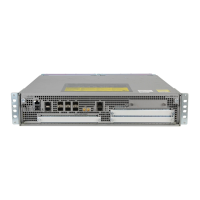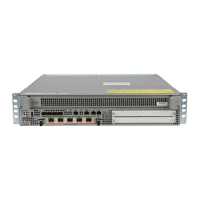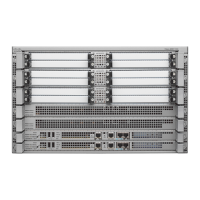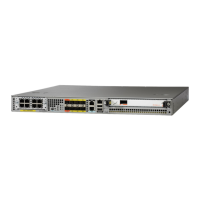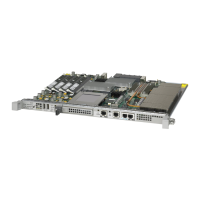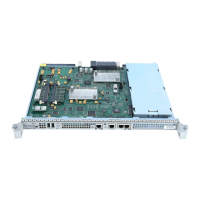Port Licensing for the Cisco ASR 1002-HX Router
The Cisco ASR 1002-HX Router has eight 1GE ports in Bay 0 and eight 10GE ports in Bay 1. By default,
four ports in Bay 0 and four ports in Bay 1 can be enabled without a license (ports 0 through 3). The remaining
ports can be enabled in pairs (ports 4 and 5, and ports 6 and 7) through licenses.
Figure 35: Cisco ASR 1002-HX Router Ports
10GE ports 0–3 can be enabled by default.
4
1GE ports 0–3 can be enabled by default.
1
10GE ports 4 and 5 require a port license.
Enabling either port will use one port license.
51GE ports 4 and 5 require a port license.
Enabling either port will use one port license.
2
10GE ports 6 and 7 require a port license.
Enabling either port will use one port license.
61GE ports 6 and 7 require a port license.
Enabling either port will use one port license.
3
Enabling one of the ports in a port pair using the no shut command consumes one count of the license, and
the In-use count increases by 1.
Disabling the ports in the port pair using the shut command releases one count of the license, and the In-use
count decreases by 1.
An End-User License Agreement (EULA) is displayed for each port pair if there is no permanent license
present to support these ports.
Cisco ASR 1002-HX Router Licensing
The Cisco ASR 1002-HX Router image carries two 1GE and two 10GE port EvalRTU (Evaluation) licenses.
If the EvalRTU license expires, it becomes a Right-To-Use (RTU) license.
•
Licensed ports in Bay 0 use a 1GE port license.
•
Licensed ports in Bay 1 use a 10GE port license.
For all possible port licensing scenarios, see Licensing Scenarios for Cisco ASR 1002-HX Router, on page
107.
Cisco ASR 1001-HX Router and Cisco ASR 1002-HX Router Hardware Installation Guide
106
License Verification
Port Licensing for the Cisco ASR 1002-HX Router
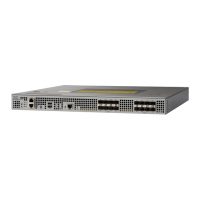
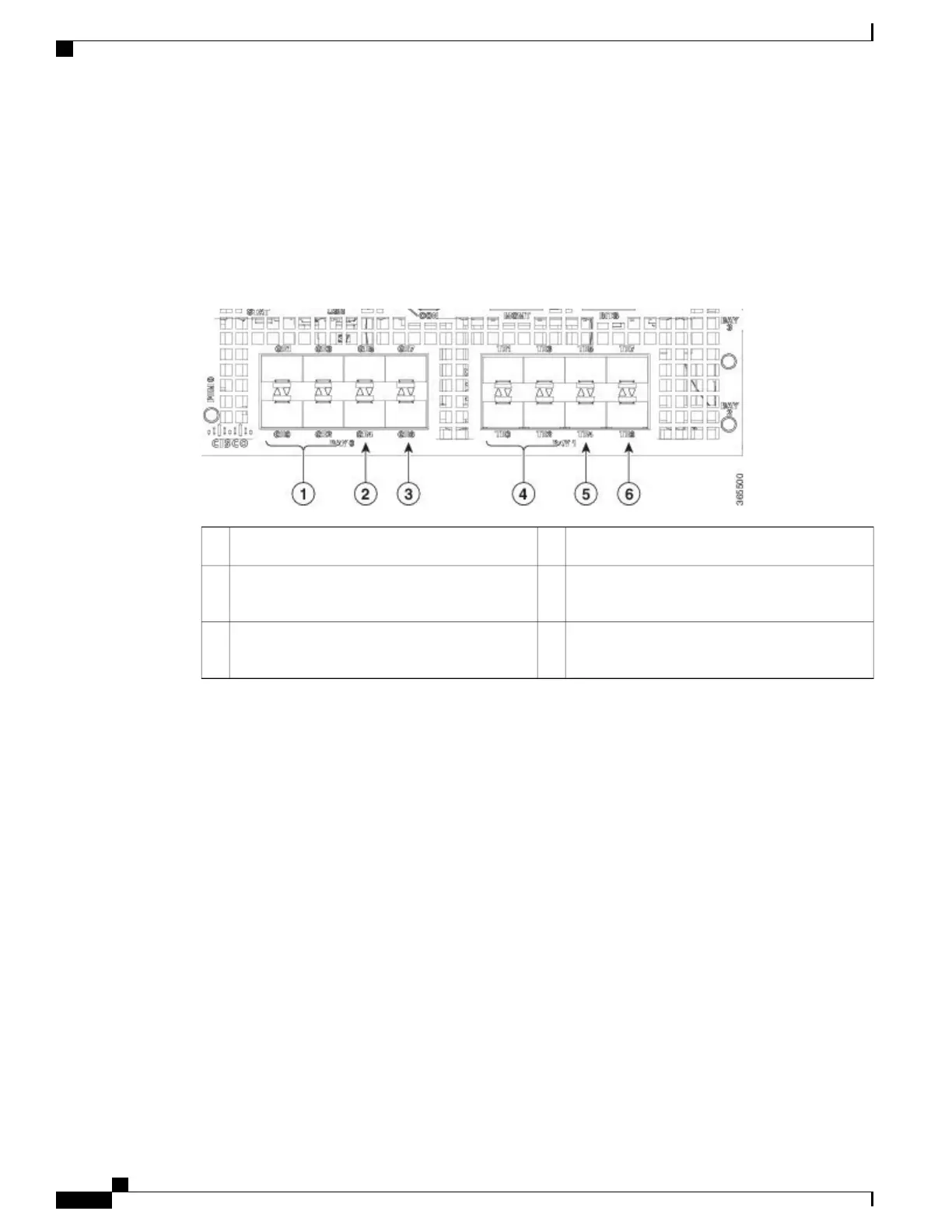